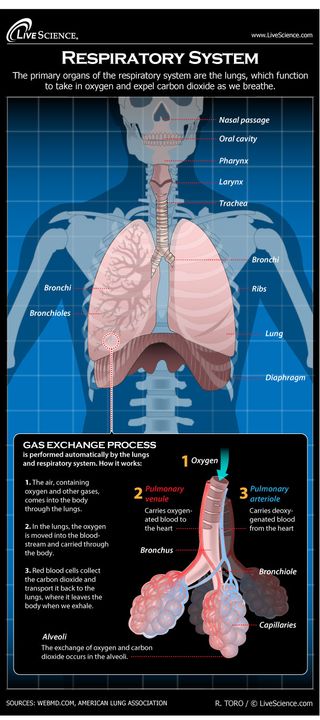Diagram of the Human Respiratory System (Infographic)

The primary organs of the respiratory system are the lungs, which function to take in oxygen and expel carbon dioxide as we breathe.
The gas exchange process is performed by the lungs and respiratory system. Air, a mix of oxygen and other gases, is inhaled.
In the throat, the trachea, or windpipe, filters the air. The trachea branches into two bronchi, tubes that lead to the lungs.
Once in the lungs, oxygen is moved into the bloodstream. Blood carries the oxygen through the body to where it is needed.
Red blood cells collect carbon dioxide from the body’s cells and transports it back to the lungs.
An exchange of oxygen and carbon dioxide takes place in the alveoli, small structures within the lungs. The carbon dioxide, a waste gas, is exhaled and the cycle begins again with the next breath.
The diaphragm is a dome-shaped muscle below the lungs that controls breathing. The diaphragm flattens out and pulls forward, drawing air into the lungs for inhalation. During exhalation the diaphragm expands to force air out of the lungs.
Adults normally take 12 to 20 breaths per minute. Strenuous exercise drives the breath rate up to an average of 45 breaths per minute.
Related:
Sign up for the Live Science daily newsletter now
Get the world’s most fascinating discoveries delivered straight to your inbox.

